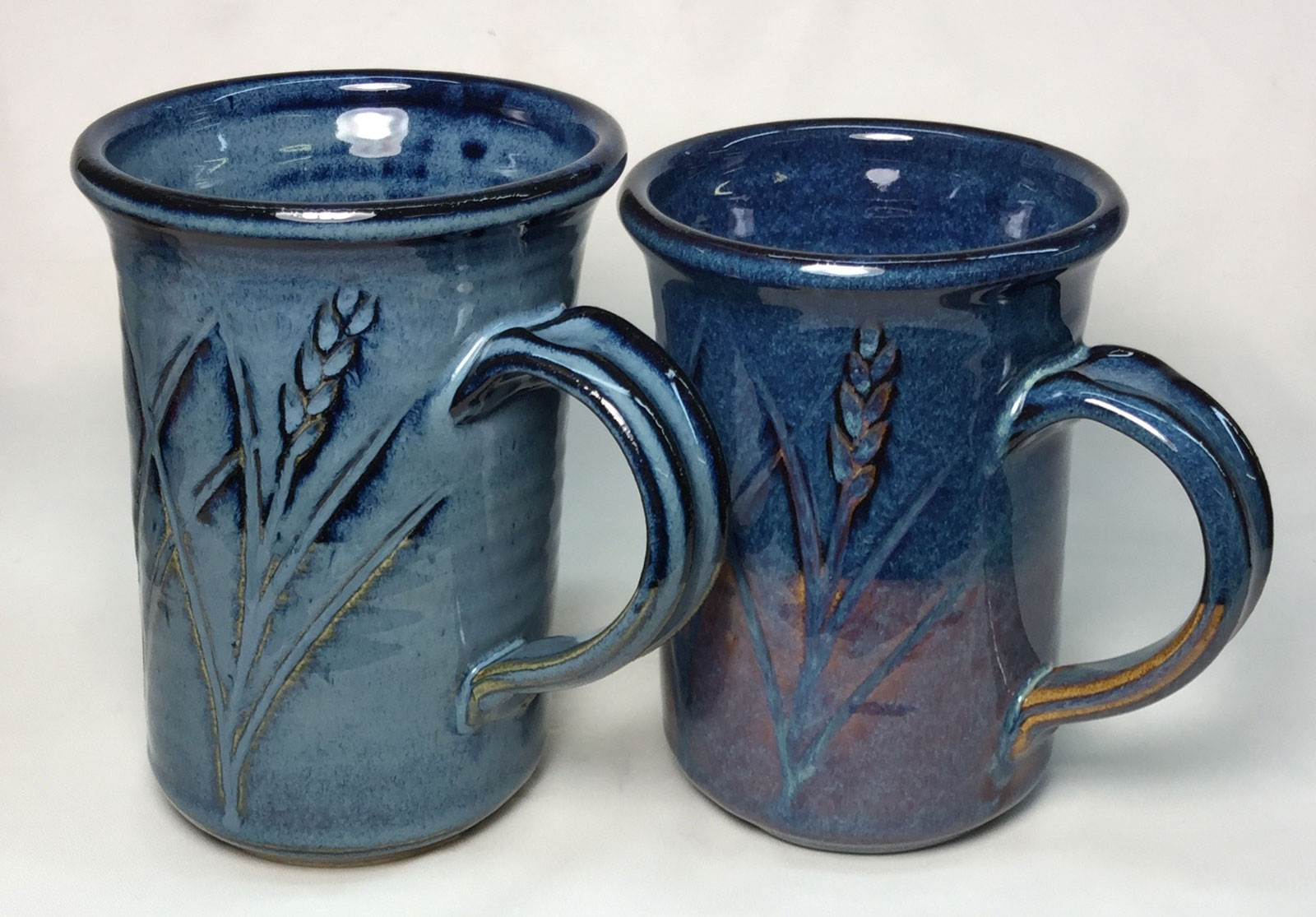Ravencrag Slip vs Alberta Slip floating blues at cone 6 oxidation
Usable, reliable, non-insight-live.com/trouble/2">crazing floating blue glazes are difficult to achieve at cone 6. Not these, they pass all the tests yet fire like the original classic G2826R floating blue from David Shaner. Both have been applied at moderate thickness on Plainsman M325 (using a slurry of about 1.43-1.45 specific gravity, higher values end up getting them on too thick). The GR6-M Ravenscrag version (left) highlights contours better (the edges are black because of the black engobe underneath). It also produces the blue color whether or not the kiln is slow-cooled (although drop-and-hold PLC6DS schedule usually fires more blue). The GA6-C Alberta Slip version has zero cobalt so it is less expensive to make (but it does require the C6DHSC slow-cool firing schedule). It produces a deeper color over the L3954F black engobe on these pieces. Both of these produce a wide range of effects with different thicknesses, bodies and firing schedules.
Pages that reference this post in the Digitalfire Reference Library:
Ravenscrag Slip, GA6-C - Alberta Slip Floating Blue Cone 6, GR6-M - Ravenscrag Cone 6 Floating Blue, Crystallization of this glaze gives insight into why it can host the floating blue effect, FLB - Floating Blue

This post is one of thousands found in the Digitalfire Reference Database. Most are part of a timeline maintained by Tony Hansen. You can search that timeline on the home page of digitalfire.com.
